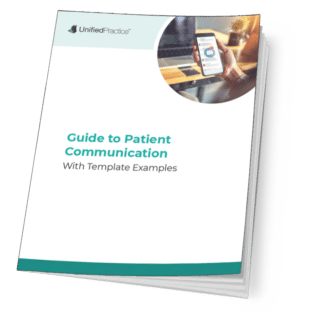If you haven’t already, at some point you may have a transgender patient. Are you ready to ask clinically relevant questions in a professional manner? You may also treat a patient whose gender is not obvious to you or your receptionist. Is your office ready to ask for pronoun preferences in a respectful way?
If your answer is “not yet,” now is the time to educate yourself and your staff.
Transgender and gender fluid people are a vital part of our communities and it is important to prepare your office on how to be welcoming, knowledgeable, and respectful.
Unified Practice has deliberately designed our acupuncture practice management software to have personal and demographic drop-down answers to be inclusive of patients who fall outside of male or female gender boxes. We are helping acupuncturists and other TCM professionals stay ahead of the curve by providing more options for self-definition for patients. This will ultimately help practitioners achieve a clearer diagnosis and treatment plan while ensuring patients feel respected and well-represented.
Best Practices To Consider
Below are a few helpful suggestions for how to create a more welcoming and affirming clinic to gender diverse and transgender patients. While it might not feel like an easy process right away, broadening our fundamental notions about gender and gender identity is crucial.
You can potentially liken it to the learning process that you underwent to learn Traditional Chinese Medicine — this process inevitably deepens your wisdom and ability to understand and hold more than one truth at a time. In fact, gender is much like the Yin and Yang spectrum. Each person has their own unique balance of Yin and Yang and this balance is complex, constantly evolving, and beautiful when seen as a whole.

Here are a few best practices to consider:
- Do your homework. Research, read, ask questions, and learn more about the topic. Below are a few resources for understanding the basics of transgender, gender fluidity, and gender non-conforming identities. This will help you build vocabulary and language to be respectful and ask relevant questions to your patients
- Talk to others. Speak with your family, your office, peers, and the LGBTQ community at large about this subject. Hopefully you will find allies and people who can help you learn and understand more
- Know the difference between gender identity and sexuality. For example, just because someone presents with a more traditionally masculine “look” does not mean they are straight
- Politely ask people’s preferred gender pronouns. Always ask which pronoun or pronouns a patient prefers. Don’t assume that a more traditionally feminine presenting person wants to be called “she.” Teach your staff or student interns to do the same
- Be inclusive everywhere. Include inclusive language on all your forms and add gender-neutral bathrooms or signage that clearly affirms a person’s right to choose the bathroom that best suits them. For signage examples, visit this website
- Respect confidentiality. This is a no-brainer because of patient-practitioner privacy laws, but it’s worth mentioning
- Be honest. If you have a new patient who is trans or gender fluid, it’s okay to let them know you are learning and may need some guidance from them
What is clinically relevant information for acupuncturists to ask?
Here are a few things to consider, though please note this is not a comprehensive list:
- Surgical History. Top and bottom surgery, as with any surgery, will cause blood stasis
- Hormone Treatment. Additional sources of testosterone/yang and estrogen/yin will affect TCM and Western organs
- Menstrual Cycle. Do they menstruate? Ask the usual TCM questions related to menstruation
- Chest Binding. The practice of binding breasts for some masculine-presenting individuals inevitably causes Qi and blood stagnation
- Sexual Activity. Are they practicing safe sex and do they have multiple partners?
- Stress Level. This is a huge issue for this patient population who face a much greater risk of physical attack, job discrimination, bathroom safety issues, suicide, family alienation, just to name a few
There is no shame in deciding your office is not ready to treat transgender and gender-ambiguous or gender-fluid patients; it takes a lot of education to have an inclusive office. If there’s still work to be done, please consider referring these patients out to practitioners who can offer the kind of quality care transgender and gender non-conforming patients need and deserve.
Resources:
- www.genderspectrum.org
- www.hrc.org
- http://www.genderdiversity.org/
- Health Care Without Shame: A Handbook For the Sexually Diverse and Their Caregivers, by Charles Moser
Guest blog post by Mamie Chow, L.Ac.
Article updated July 2019




